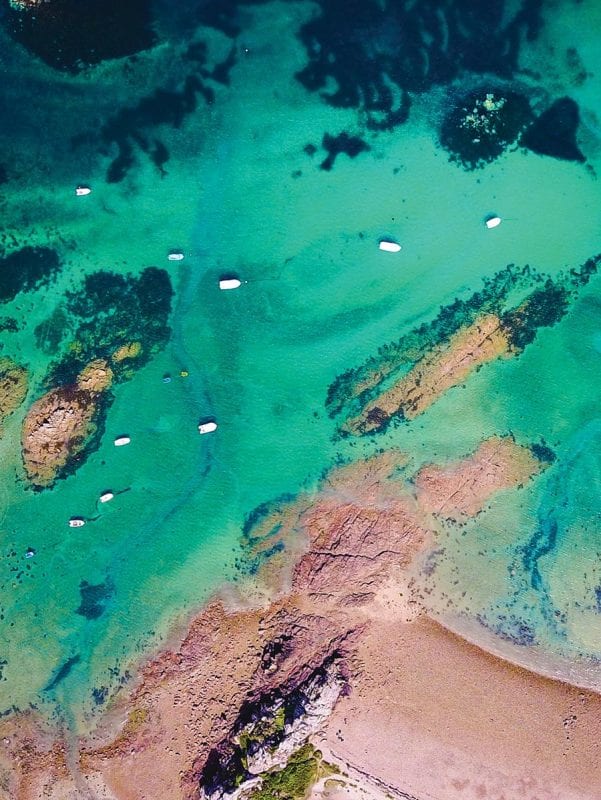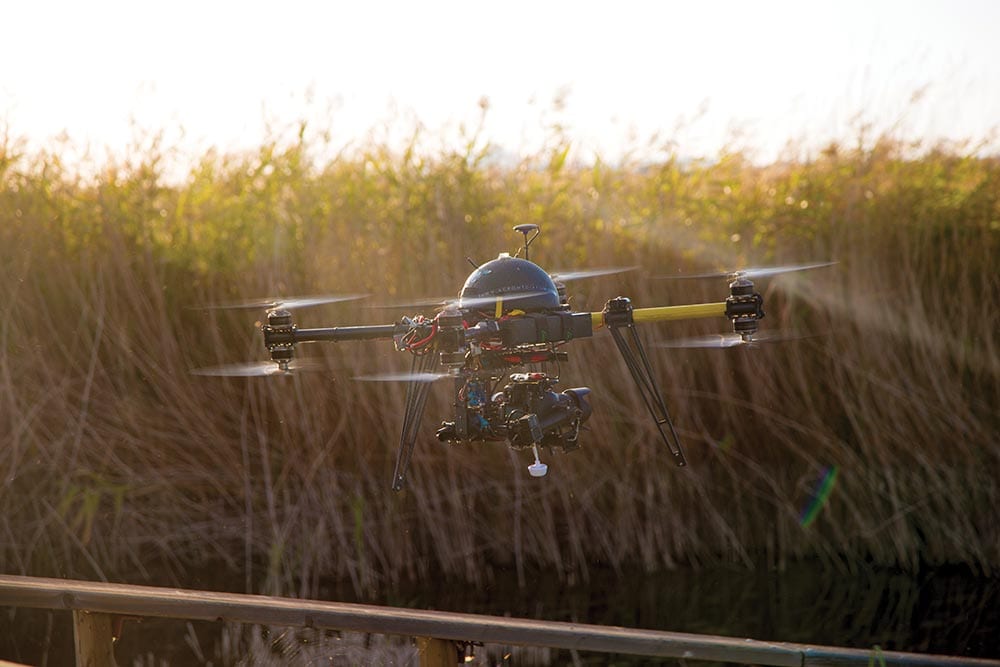The advantage of a bird’s eye view is undeniable. From the stilt fishermen of Sri Lanka to the tuna towers on modern fishing boats, anglers have always sought an elevated view into the water. Drone fishing might just be the answer.
Drones are the latest tool fishermen have adopted to see farther and deeper. Drone Fishing is still relatively new and evolving, but there is already evidence it is a piece of gear worth packing in the tackle box.
The first and most obvious use for video-equipped drones is reconnaissance. With technology that allows real-time viewing, it is possible to see farther out and deeper than ever before. A drone can cover more water looking for fish, bait, color changes and structure. Shore-bound or wading anglers have the ability to scout water they would have never seen before.
Imagine the advantage of flying a shoreline, over a flat or even up a creek before approaching it. From the air and with moderately clear water, it is possible to eliminate unproductive water, identify likely structure and even spot individual fish or pods of bait. With just a few minutes of flying time, wading anglers or those fishing from kayaks can gather the kind of information that would require days of exploration without a drone.
Even from a boat, the extended visual range gives you an advantage. Ever watch fish scatter at the sound of your motor? Using a drone to scout alerts you to the presence of fish, so you’ll know to ease up on them.
Drone Fishing Not Just A Gimmick
Anyone who has seen videos of the guy battling bream with a hook-and-line equipped drone will recognize catching fish with a drone is nothing more than a gimmick at the moment. However, surf fishermen are effectively using drones to deliver baits much farther out than the length of a cast. Flying cut bait past the breakers is quicker and easier than paddling it out with a surfboard. And on freshwater reservoirs, bank-bound fishermen could deliver live herring to a distant river channel.
This bait delivery system requires the use of a drone with the ability to carry a significant payload. The line is attached to a release clip suspended beneath the drone. With the reel on free spool, the angler flies the bait out before engaging the reel to provide tension to release the bait. There are already drone-specific release clips available, and outrigger clips and kite clips also do the job.
The most important link in the system is the drone, though. You don’t want to be drone fishing with a cheap beginner’s model. For scouting, you’ll need a good camera and viewing screen. Payload-carrying capability is a must for bait delivery. With either function, extended battery life, stable hovering and the ability to fly in wind are necessary. Expect to spend at least $400 with the understanding that it is possible you’ll end up losing it in the depths.
That could get expensive pretty quickly, but it’s peanuts compared to the cost of a boat.
Drone photo- Photo courtesy of www.BoldContentVideo.com
Overhead photo- Photo by Sebastian Appelt/flickr

